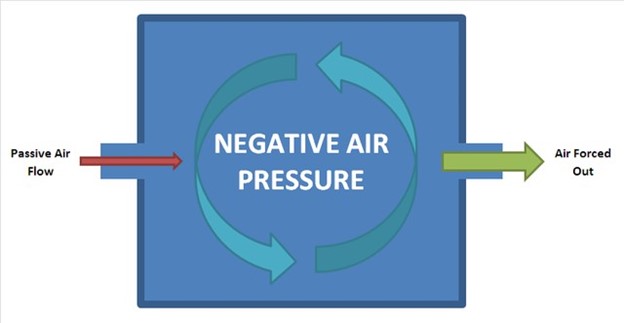A nurse is preparing to admit a 6-year-old with varicella to the pediatric unit.
Which of the following actions should the nurse take?
Administer aspirin to the child for fever
Use droplet precautions when caring for the child.
Assign the child to a negative air pressure room.
Assess the child for Koplik spots
The Correct Answer is C

This is because varicella, or chickenpox, is a highly contagious disease caused by the varicellazoster virus (VZV), which can spread through the air or by direct contact with the fluid from the blisters. A negative air pressure room prevents the air from the room from circulating to other areas of the hospital, reducing the risk of transmission to other patients and staff.
Choice A is wrong because aspirin should not be given to children with chickenpox, as it can cause a serious condition called Reye’s syndrome, which affects the brain and liver. Instead, acetaminophen can be used to reduce fever.
Choice B is wrong because droplet precautions are not enough to prevent the spread of chickenpox. Droplet precautions involve wearing a mask and gloves when in close contact with the patient, but they do not prevent the virus from traveling through the air. Airborne precautions, which include a negative air pressure room and wearing a respirator, are needed for chickenpox.
Choice D is wrong because Koplik spots are not a sign of chickenpox, but of measles, another viral infection that causes a rash. Chickenpox causes an itchy rash with small, fluid-filled blisters that crust over.
Nursing Test Bank
Naxlex Comprehensive Predictor Exams
Related Questions
Correct Answer is ["A","C"]
Explanation
A: Review the need for the indwelling urinary catheter daily.
This is correct because indwelling catheters should be removed as soon as possible to reduce the risk of urinary tract infection (UTI).
B: Place the drainage bag on the bed when transporting the client.
This is incorrect because the drainage bag should be kept below the level of the bladder and should not touch the floor to prevent the backflow of urine and contamination of the catheter.
C: Use soap and water to provide perineal care.
This is correct because soap and water can help to remove bacteria and debris from the meatus and prevent infection.
D: Encourage the client to drink 3000 mL of fluid daily.
This is incorrect because the client has a fluid restriction of 1000 mL daily due to heart failure. Excessive fluid intake can worsen the client’s condition and increase the workload of the heart.
E: Change the indwelling urinary catheter tubing every 3 days.
This is incorrect because changing the catheter tubing can increase the risk of infection by breaking the closed drainage system. The catheter tubing should only be changed when it is visibly soiled or malfunctioning.
F: Empty the drainage bag when it is half full.
This is incorrect because the drainage bag should be emptied at least every 8 hours or when it is one-third full to prevent back pressure and infection.
Correct Answer is B
Explanation
The correct answer is choice B. Use an ibuterol inhaler.
Choice A rationale:
Completing oral hygiene is important for overall health, but it is not specifically related to the preparation for postural drainage in cystic fibrosis patients. Postural drainage is a technique used to clear mucus from the lungs, and oral hygiene does not directly affect this process.
Choice B rationale:
Using a bronchodilator, such as an ibuterol inhaler, is recommended before postural drainage because it helps to open the airways, making the drainage process more effective. Bronchodilators are often used to relax the muscles around the airways, which can become constricted in conditions like cystic fibrosis.
Choice C rationale:
Taking pancrelipase is related to aiding digestion in cystic fibrosis patients who have pancreatic insufficiency. While it is an important part of the overall management of cystic fibrosis, it is not directly related to the preparation for postural drainage.
Choice D rationale:
Eating a meal before postural drainage is not recommended because a full stomach can make the process uncomfortable and less effective. It is generally advised to perform postural drainage on an empty stomach to ensure that the mucus can be cleared from the lungs more easily.
Whether you are a student looking to ace your exams or a practicing nurse seeking to enhance your expertise , our nursing education contents will empower you with the confidence and competence to make a difference in the lives of patients and become a respected leader in the healthcare field.
Visit Naxlex, invest in your future and unlock endless possibilities with our unparalleled nursing education contents today
Report Wrong Answer on the Current Question
Do you disagree with the answer? If yes, what is your expected answer? Explain.
Kindly be descriptive with the issue you are facing.
